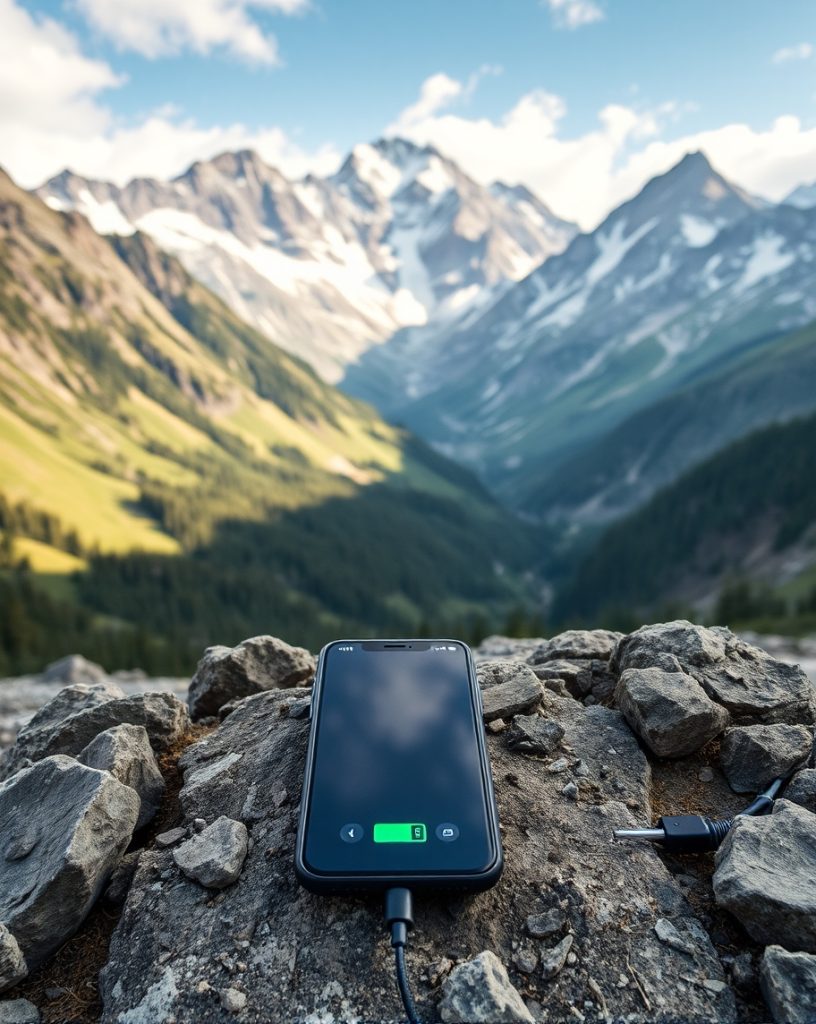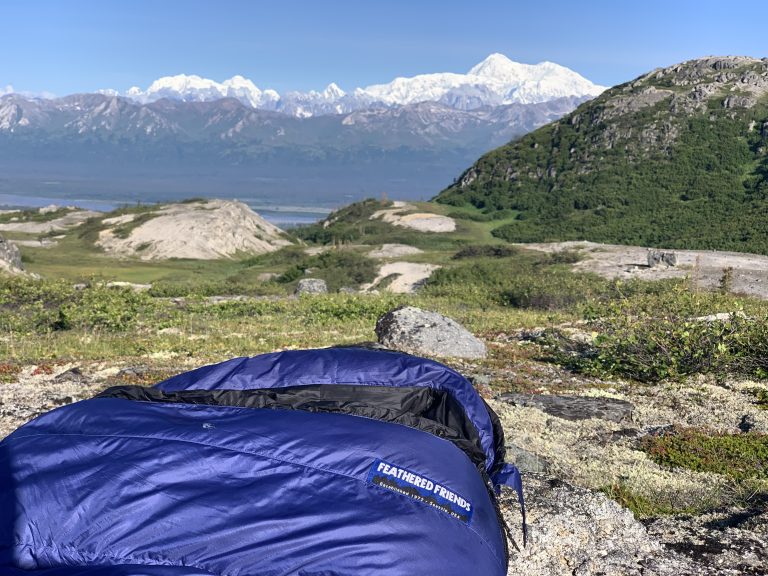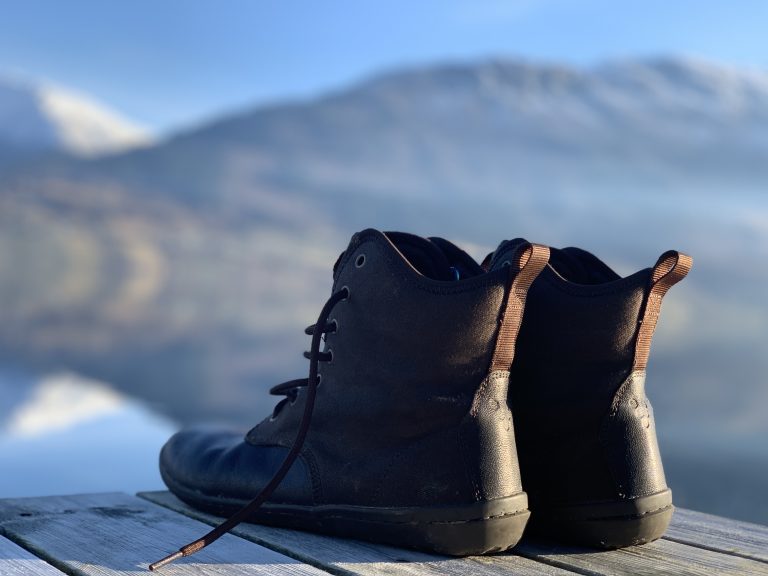Some might consider it an unnecessary luxury, but given that phones today double as GPSs, cameras, and emergency beacons, keeping some battery in your device is not a bad idea. Whether you’re navigating tough terrain or documenting your journey, a high-quality portable power bank ensures you’ll have enough juice to get back to the trailhead. As always, we won’t overload you with too many choices—just the options that we actually recommend. We also include solar options for those with more miles to cover between outlets.
Let’s dive into the top picks for making sure you don’t have to go through digital withdrawal when on the trail.
Top Factors to Consider When Choosing a Backpacking Power Bank
When choosing the right power bank for the backcountry, consider these key factors:
- Weight and Portability: Every ounce matters on long hikes, so prioritize lightweight options.
- Battery Capacity: Ensure the bank provides enough mAh to recharge your devices several times.
- Durability: Look for shockproof and water-resistant power banks that can handle rugged environments. In reality, we usually don’t worry too much about water resistance. We just use ziplock bags.
- Charging Speed and Ports: Prioritize power banks with fast charging and multiple ports, especially USB-C. We’re part of the No More USB-A Adapter Association…just kidding. But really. USB-C is just so much faster.
- Solar Compatibility: Although slower than wall charging, solar-compatible power banks can be useful for extended trips without outlet access. This might make sense only if you’re planning to be out for a long time but don’t want to lug a massive power bank.
How Much Wattage Do You Need For Your Power Bank?
Before choosing a power bank, it’s important to understand how much capacity (measured in milliamp hours, or mAh) is required for your needs. The general rule is that larger capacity power banks can charge more devices or last longer, but they also weigh more, which can be an issue for ultralight backpackers. This reddit user provided a great overview.
- Understand mAh vs. Wh: Power banks are typically rated in mAh, but the actual power available to charge your devices is lower due to inefficiencies in converting voltage. A good rule of thumb is to estimate about 75-85% efficiency for most power banks.
- Battery Capacity vs. Real Usage: Here’s how many times you could charge an iPhone 15 (which has a battery capacity of approximately 3,349mAh) with different power bank sizes:
- 5,000mAh Power Bank: About 1.1 charges (taking efficiency into account, around 3,750-4,250mAh of usable power).
- 10,000mAh Power Bank: About 2.1 charges (with around 7,500-8,500mAh of usable power).
- 20,000mAh Power Bank: About 4.3 charges (with approximately 15,000-17,000mAh of usable power).
- Matching Power to Your Trip: A weekend backpacking trip may only require a smaller 5,000mAh power bank if you’re carrying minimal electronics, while longer or more device-heavy adventures may need a 10,000-20,000mAh bank. As mentioned before, solar chargers are also a viable option for extended trips.

Tips for Saving Power on Your Phone While Backpacking
When you’re on the trail, preserving your phone’s battery is crucial. Here are some tips to help you extend the life of your charge:
- Keep Your Phone in Airplane Mode: This is a huge power-saver, especially when you don’t need cellular service. Airplane mode turns off all connections, helping conserve battery significantly.
- Use Low Power Mode: Activating low power mode on your phone limits background activities like mail fetching and automatic downloads, which helps extend battery life.
- Lower Screen Brightness: Reducing screen brightness can make a big difference, especially on longer days.
- Turn Off Unnecessary Features: Disable features like Wi-Fi, Bluetooth, and location services when they’re not needed.
- Limit App Usage: Only use essential apps and close others when they’re not in use.
The Best Portable Power Banks for Backpacking in 2024
We don’t want to make your head hurt with too many options. Our reviews focus on being to the point, so we want to tell you what makes sense. If there’s one option, we’ll tell you one option. If there are four that stand out, we’ll list four. But if there’s only one, you’ll only hear about the best one.
1. Anker PowerCore+ 10000 PD
We strongly recommend Anker PD banks for their balance of weight, charging speed, and overall reliability. Nitecore is great, but it’s twice as expensive. It’s up to you to determine if you’re willing to pay that to take off 45g of weight.
- Capacity: 10,000mAh
- Weight: 195g
- Estimated iPhone 15 Charges: ~2.1 charges (An iPhone 15 has a battery capacity of around 3,349mAh. Accounting for about 85% efficiency, the Anker PowerCore+ 10000 can charge it approximately 2.1 times).
- Approximate Cost: $35-$45
- Fast-Charging USB-C: Delivers 18W power, allowing for faster charging times compared to traditional banks. It charges most smartphones from 0-50% in around 30 minutes.
- Warranty: Anker provides an 18-month warranty, ensuring your device is covered for over a year.
2. Nitecore NB10000
Nitecore NB series is a favorite among ultralighters but they’re also known to have some issues with reliability.
- Capacity: 10,000mAh
- Weight: 150g
- Estimated iPhone 15 Charges: ~2.1 charges (The Nitecore NB10000 can charge an iPhone 15 about 2.1 times, given the same efficiency rates).
- Approximate Cost: $60-$70
- Lightweight at 150g: Perfect for ultralight backpacking, one of the lightest on the market for its capacity.
- Charging Speed: The USB-C output delivers up to 18W of power, similar to the Anker PD, enabling quick charging for phones and small devices. It charges most smartphones from 0-50% in around 30 minutes.
- Carbon Fiber Construction: Ensures durability without adding unnecessary weight.
- Warranty: Nitecore offers a 12-month warranty on the NB10000, covering defects and quality issues.
3. Goal Zero Venture 30
This power bank is known for its durability and ease of use in wet environments. Goal Zero is also renowned for its customer support and solid warranty.
- Capacity: 7,800mAh
- Weight: 250g
- Estimated iPhone 15 Charges: ~1.6 charges (With its 7,800mAh capacity, this power bank can charge an iPhone 15 approximately 1.6 times).
- Approximate Cost: $80-$100
- Charging Speed: With USB-C and USB-A outputs, the Goal Zero Venture 30 provides up to 12W charging. This is slower than the 18W options but still fast enough to fully charge a phone in about an hour.
- Waterproof and Rugged: Built for extreme outdoor conditions, the Venture 30 is waterproof and shock-resistant.
- Warranty: Goal Zero provides a 2-year warranty, covering both the battery and materials.
4. Aqua Vault ChargeCard
Our recommendation for short trips or someone who just wants an emergency backup, Aqua Vault ChargeCard is super light and convenient. It’s not meant for extended use, but if you want something compact for quick top-ups in a pinch, this is a solid choice.
- Capacity: 2,700mAh
- Weight: 58g
- Estimated iPhone 15 Charges: ~0.7 charges
- Approximate Cost: $60
- Charging Speed: Provides up to 5W charging. This is a slow charging option, designed primarily for emergencies or quick top-ups rather than regular use.
- Slim, Wallet-Friendly Design: The Aqua Vault ChargeCard is a credit card-sized power bank designed for maximum portability. While it doesn’t offer the highest capacity, it’s great for emergency situations and can easily fit in a wallet or pocket.
- Great for Minimalists: Ideal for ultralight backpackers or those who need a quick, lightweight backup charger on short trips.
- Warranty: The Aqua Vault ChargeCard comes with a 1-year warranty, covering manufacturer defects and malfunctioning units.
The Best Portable Solar Chargers for Backpacking in 2024
Sometimes, if you’re out on the trail for a while, you might need a solar charger. Here are the three that we (and much of the outdoor community) recommends. Each option offers great efficiency, durability, and portability, making them excellent companions for backpacking.
1. Ryno Tuff 21W Solar Charger
The Ryno Tuff 21W Solar Charger is known for its impressive charging speeds, even outperforming some higher-wattage panels. It’s great for backpackers needing to charge multiple devices quickly in full sun.
- Weight: 482g (17 oz)
- Power Output: 21W
- Charging Speed: Capable of producing up to 2.4A per port. It can charge a phone 34% in 30 minutes in direct sunlight. Charging an iPhone 15 from 0-100% would take about 2-3 hours. For a typical 10,000mAh battery pack, it would take approximately 6-8 hours in full sun.
- Approximate Cost: $50-$60
- Warranty: 1-year warranty, covering manufacturer defects and malfunctions.
2. Goal Zero Nomad 7
The Goal Zero Nomad 7 is great for those who prioritize durability and are on longer trips, but its slower charging speeds make it better suited for light or emergency use rather than constant recharging.
- Weight: 454g (1 lb)
- Power Output: 7W
- Charging Speed: The Nomad 7 produces up to 1.0A, meaning charging an iPhone 15 would take 4-6 hours in ideal sunny conditions. Charging a 10,000mAh battery pack could take 15-20 hours in optimal sunlight, making it slower than higher wattage options.
- Approximate Cost: $80-$100
- Warranty: 1-year warranty, covering defects and malfunctions.
3. Nekteck 21W Solar Charger
The Nekteck 21W Solar Charger is a bit cheaper than the Ryno Tuff. However, we’d recommend spending the extra ten bucks for the rugged Ryno Tuff.
- Weight: 482g (18 oz)
- Power Output: 21W
- Charging Speed: Produces up to 2.4A per port, similar to the Ryno Tuff. It can charge an iPhone 15 from 0-100% in about 2-3 hours. Charging a 10,000mAh battery pack will take around 6-8 hours in optimal conditions.
- Approximate Cost: $40-$50
- Warranty: 18-month warranty, covering manufacturing defects and malfunctions.
Should You Choose a 7W or a 21W Solar Charger?
Choosing between a 7W or 21W solar charger depends on a few key factors, such as the length of your trip, how many devices you need to charge, and the conditions in which you’ll be traveling:
- 7W Solar Charger (e.g., Goal Zero Nomad 7):
- Best for short trips or minimal power needs. A 7W charger can slowly charge a single device, like a smartphone, over the course of a sunny day. However, it won’t be able to charge multiple devices quickly, and it’s more suitable for users who don’t require constant access to power.
- Advantages: Lightweight and more compact, ideal for simple charging needs in sunny conditions.
- Disadvantages: Slower charging times and not ideal for users who need to charge more than one device or charge larger devices like tablets.
- 21W Solar Charger (e.g., Ryno Tuff or Nekteck):
- Best for longer trips and multiple devices. A 21W charger offers significantly faster charging times and can handle two devices simultaneously. If you’re carrying multiple electronics (such as a phone, GPS, camera, etc.), a 21W charger ensures you stay powered without much downtime.
- Advantages: Faster charging, capable of charging multiple devices, and ideal for long hikes with ample sunlight exposure.
- Disadvantages: Slightly heavier than the 7W version, but the trade-off is faster and more efficient charging.
Conclusion:
I hope that helps you pick out the best power bank for your needs.
Anker PD banks offer reliability and fast charging, making them great for most backpackers. Meanwhile, the Nitecore NB series provides an ultralight solution for those focused on minimal weight—just be aware of the quality control concerns. Goal Zero, Aqua Vault, and Nekteck offer rugged, minimalist, and solar-powered options, respectively. For longer trips, where sunlight is abundant, a solar charger like the Ryno Tuff 21W or Nekteck 21W offers excellent charging solutions.



